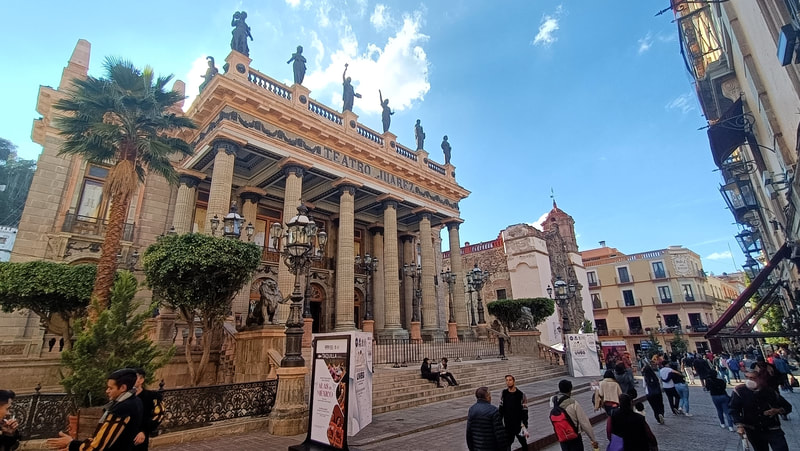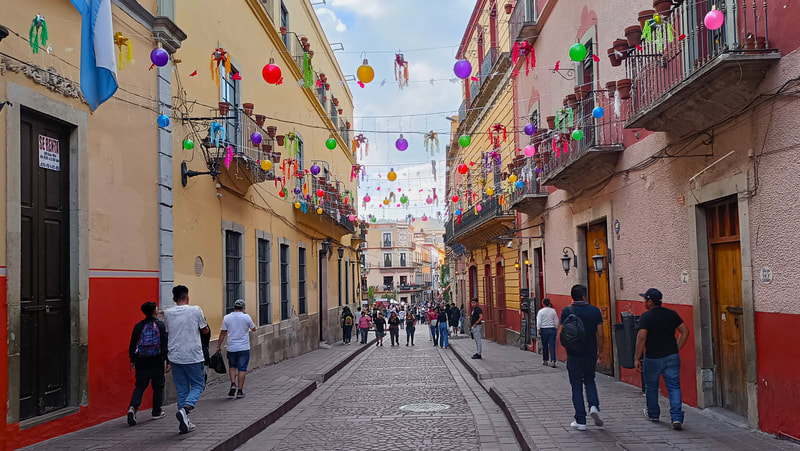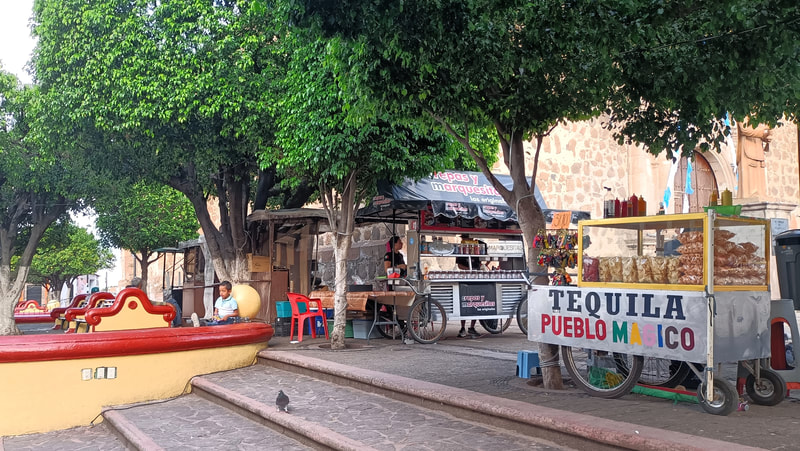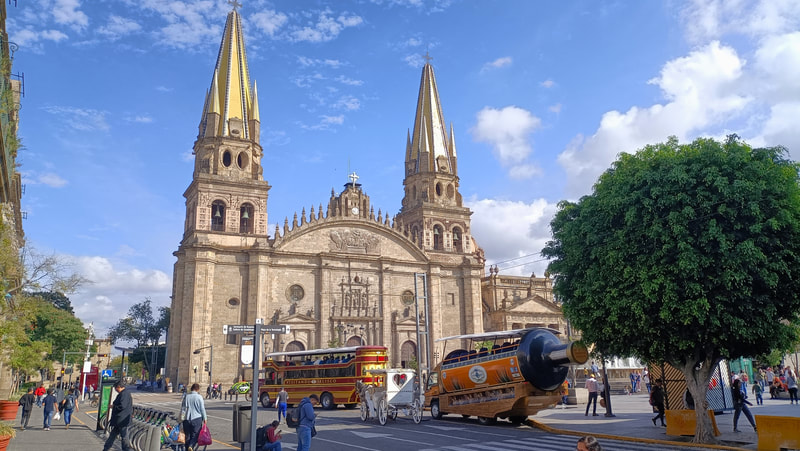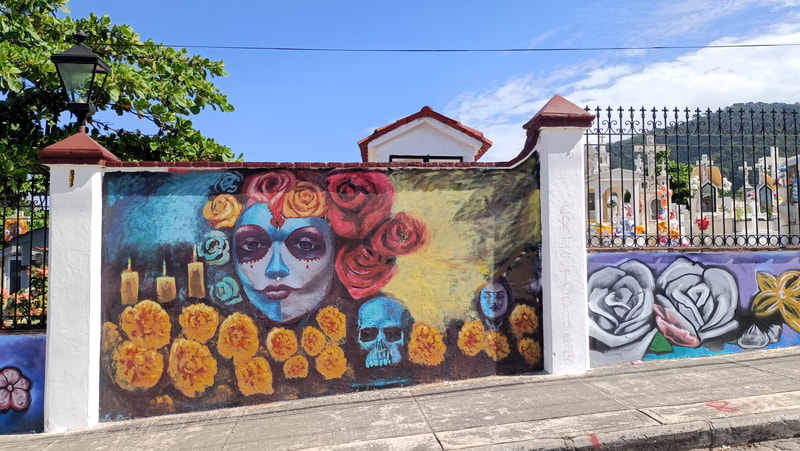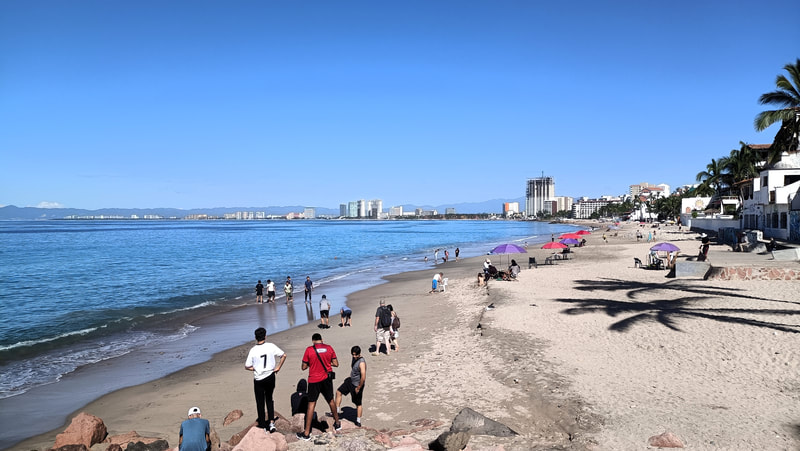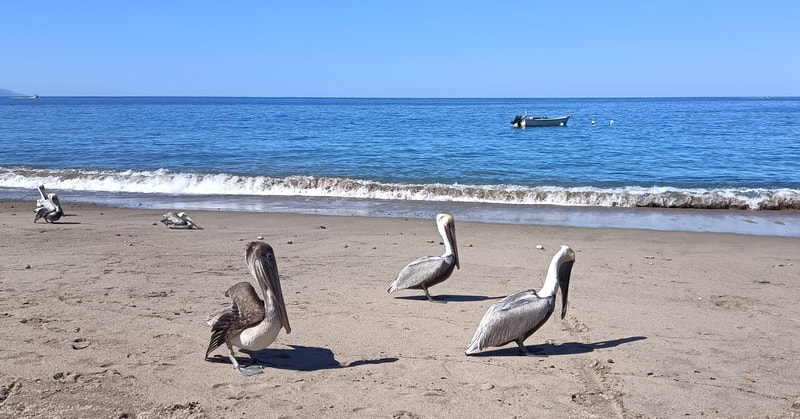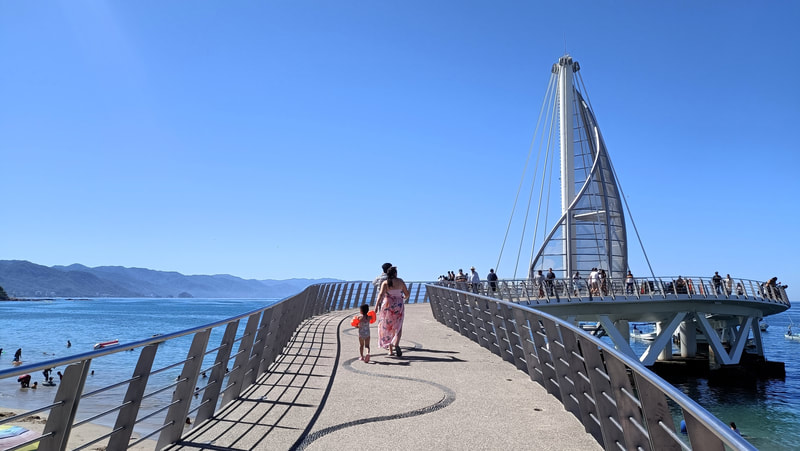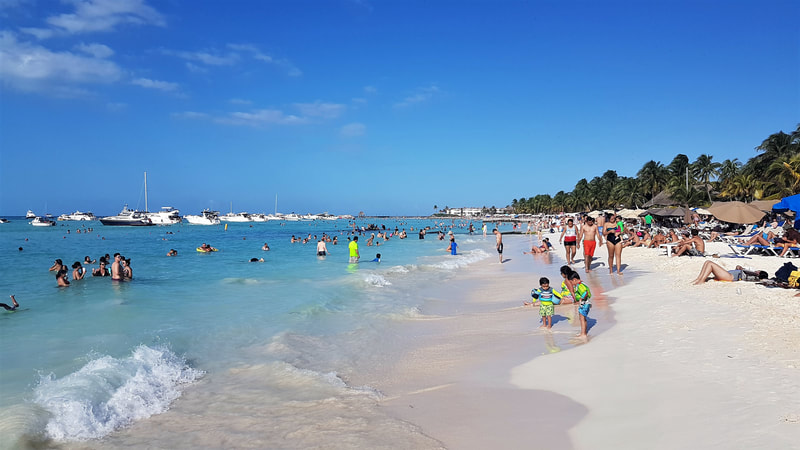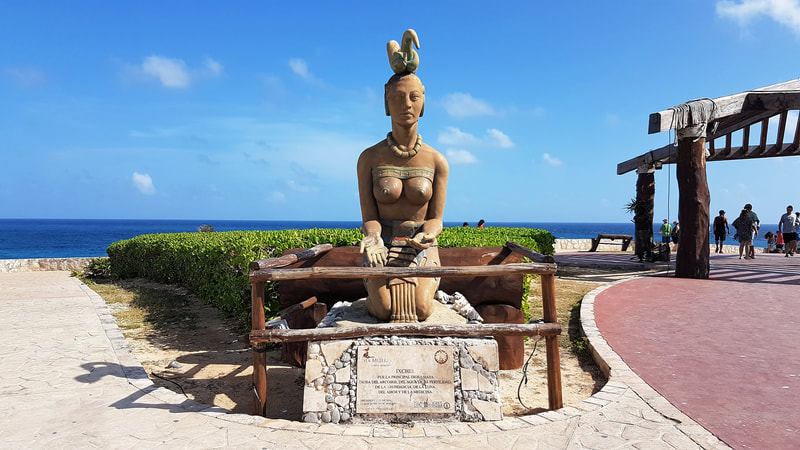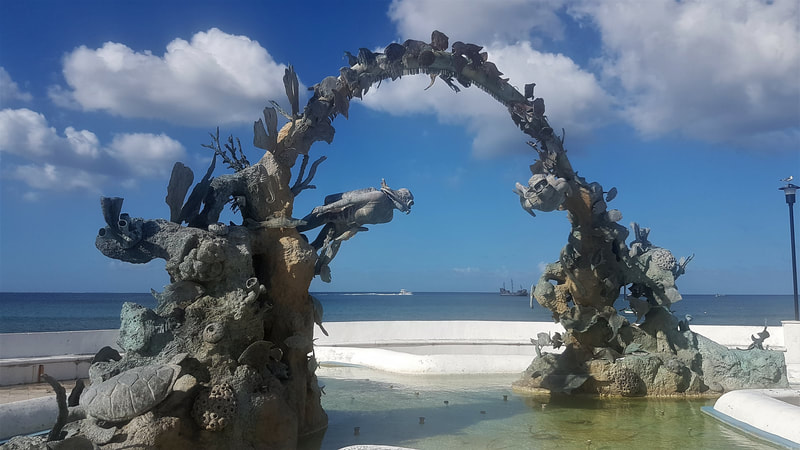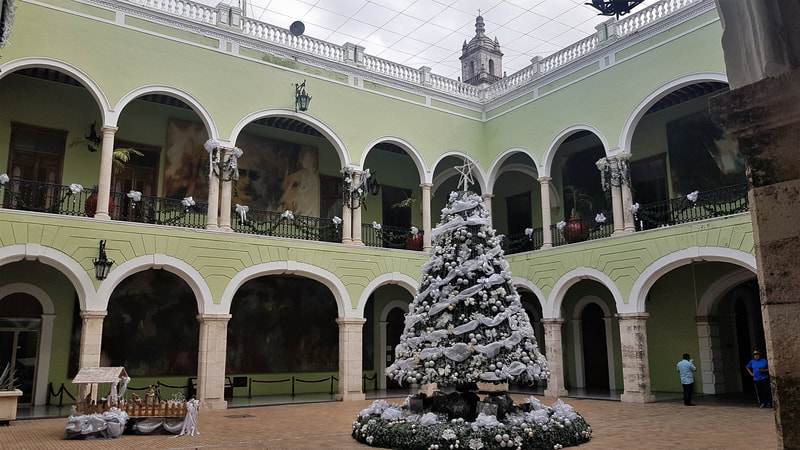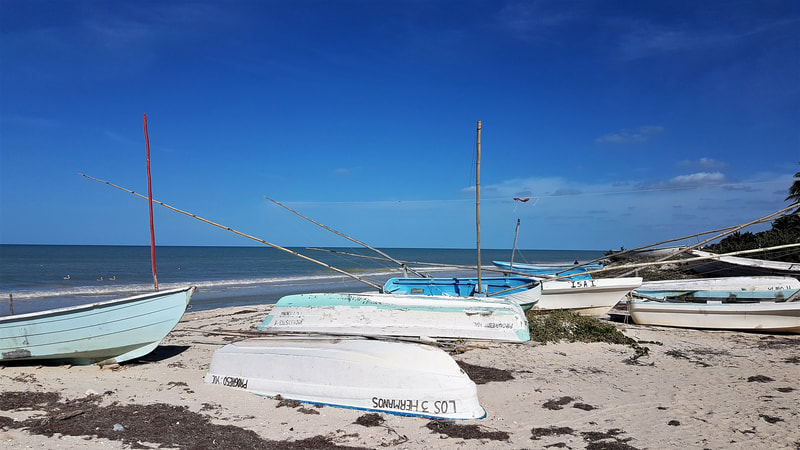|
From Guadalajara, it was a five-hour ride by ETN bus to the city of Guanajuato, the capital of the state of the same name. The city is located about 370 km northwest of Mexico City, at an altitude of 1,996 m above sea level. The city with colonial architecture has a prosperous history thanks to the amount of silver found here by the Spanish in the sixteenth century. Guanajuato has traffic tunnels under the city that were originally built to channel excess water out of the city.
I stayed in a hotel at the central Plaza de la Paz, which includes the yellow cathedral that defines the cityscape. From here I walked through the winding streets and narrow cobblestone alleys (callejones). Notable buildings include the white building of the university, the Mercado Hidalgo in a building once built as a train station and the beautiful Juarez theater. I visited the mummy museum, which exhibits hundreds of mummies. By cable car I went to the statue of city hero Pipila. From here I had a wonderful view of the city. In the (cold) evenings, I was entertained by the Callejoneadas. I followed these groups of traditionally dressed musicians (estudiantinos) who make traditional folk music while moving through the alleys of the city.
0 Comments
I went on an organized tour to Tequila, about 60 kilometers from Guadalajara. With an international group of 12, we first visited a distillery in Amatitan for a small tour and tasting. Then we made a stop for drinking a Cantaritos (tequila cocktail in stone pot) among fields full of blue agave. Then lunch was consumed on the flanks of the Tequila volcano. Here we had beautiful views of the village of Tequila in the valley.
We spend the afternoon in Tequila. First at the distillery of the famous brand Jose Cuervo. Then we had time to explore the village on our own. In the busy evening rush hour we returned to Guadalajara. By Vallarta Plus bus, I travelled in about 5 hours from Sayulita to the Zapopan terminal in Guadalajara. There I took an Uber to my hotel in downtown Guadalajara. This city is located in the state of Jalisco in the highlands of western Mexico. With over 5 million residents, Guadalajara is the largest metropolitan area in Mexico after Mexico City. The city, where Mariachi music originated, actually consists of several small towns that have grown together.
During my first day in the city, it only rained. Still, I walked a lot I the area around the cathedral; theeye-catcher of the old town. Fortunately, the next day I also saw the city in sunshine. I visited the Cabañas museum (in an old orphanage) and took the subway to the colourful village of Tlaquepaque, a "Pueblo Magico" within the Guadelajara metropolitan area. I took the local bus from Sayulita to San Pancho. This small quiet village lies on a beautiful long beach a few miles north of Sayulita. From the bus stop on the "highway" I walked down the main street straight to the beach. Other than a little walk around the village, I spend the entire afternoon on the beach enjoying the waves, pelicans and sunshine.
I took an Uber to go 45 kilometers north of Puerto Vallarta to the village of Sayulita, in the state of Nayarit. The number of surfers, hippies and gringos is quite high here, but there is still a relaxed atmosphere in this so-called "Pueblo Magico". The liveliness takes place mainly in the central square and the streets around it.
The beach 'Playa Sayulita' was not very clean, with too many surfers in the sea and a crowded beach packed with beach beds and vendors. A little further north (Playa Norte) was better to me: less people and fewer buildings. At the end of that beach, I climbed over some rocks to take a short hike to virgin Playa Malpaso. Just south of Sayulita, I also visit the beaches Playa de los Muertos (next to a cemetery) and the quiet Playa Carricitos. I flew with KLM from Amsterdam to Mexico City in 11.5 hours. After a night in a hostel near the airport, I had another flight of over an hour to Puerto Vallarta. 'Vallarta' is located in the state of Jalisco on the Pacific west coast of Mexico. Here I stayed a week in the old town (Zona Romantica) on the Rio Cuale River. After a cloudy and clammy start of the week, I had several sunny days in this large resort town that extends along the Bahia de Banderas.
Every day I took walks along the Malecón (boulevard), in the city center and in the old town. Especially at night, the Malecon was very lively with performances, stalls and people chatting. From the Cerro de la Cruz I had a beautiful view of the city and the bay. In the cemetery and on the Malecón there were still many visible reminders of the Dia de los Muertos (earlier in the month). I spend my "beachtime" mostly at the Playa de Los Muertos, the popular city beach south of the pier. Though I also walked along the coast to the beaches located north and south of the main beach. The close proximity to Cancún Airport (within 1,5 hours) made Isla Mujeres a perfect last stop for the last days of my holiday in Mexico. The island lies a 20 minutes ferry ride from Cancún. The touristy little town of Isla Mujeres is on the northern part of the island. Playa Centro and Playa North are beautiful white sand beaches but crowded since it is visited by many day trippers from Cancún as well.
With a length of 8km and a wide average of 550m the island is easy to cover on a bicycle (however most tourists opt for a golf kart). So I got myself a bicycle and rode along the western shore to the south point of the island. I made stops at a turtle farm and a beachclub before I reached Punta Sur. The way back to tourist town I enjoyed the rougher east shore and its empty beaches. Isla Cozumel is Mexico's third largest island and can be reached by a ferry from Playa del Carmen. Cozumel is a popular diving spot since 1961, when Jacques Cousteau made the reefs and marine-life known to the public. Nowadays Cozumel is also a popular cruise port, and the main city of San Miguel de Cozumel was obviously more relaxed in the evenings when the cruise ships had left the island.
My main reason to visit Isla Cozumel was to go scuba diving the reefs. On the first day of scuba diving it was raining a lot (not so pleasant to be on a boat, but no problem when diving the reefs). I made two nice drift dives this day. Drifting on the currents next to the walls of corals felt like watching an underwaterworld movie. At the end of the second dive we were surrounded by large eagle rays and a dolphin. The second day of scuba diving started with a dive through the tunnels of the Palancar reef. The surface interval between the two dives was on a nice small beach on the south-end of the island. My last dive was at the divesite "Paso de Cedral". Here I saw plenty of marine life like hawksbill turtles, a large spotted eagle ray, octopuses, stingrays, a nurse-shark and a few spendid toadfishes (a fish that can only be found around Cozumel). I spend New Years Eve with my diving buddies from the second day. We got some drinks at the Oxxo supermarket and spend our time till midnight on the (mostly empty) squares in the town. At midnight there was small fireworks at the malecon (waterfront boulevard). The new year started with some parties with live music among a mostly mexican crowd (avoiding the gringo-parties near the cruise docks). To avoid tourist peak (prices) at the Caribbean coast during Christmas I booked a week in a hotel in Mérida, the capital of the Yucatan state. This city founded by the Spanishin the 1540s on op of a old Maya city.
The city's ambiance is colonial and there is a tropical climate. In the evenings the people go outdoors and the central mainsquare (Plaza Grande) is full with people. Mérida had a rich cultural life and many free cultural performances are held every day of the week. (Except for Christmas Eve when everything is closed and the people spend their time in the churches and with family at home.) From Mérida I took day trips to the archealogical site of Uxmal, the flamingo reserve of Celestún and the beach of Progreso on the Gulf of Mexico. The beach escape for Méridanos (people from Mérida) is Progreso, 33km north of Mérida. Puerto Progreso is also an embarkment point for cruise-ships. I was lucky to visit Progreso on a day that there were no cruise-ships. This gave me the good opportunity to relax on the white sand beach. Since Progreso is on the Gulf of Mexico, the sea isn't as clear as on the Caribbean coast. However it was still refreshing!
|
Places in Mexico
All
Mexico Archives
December 2023
|




